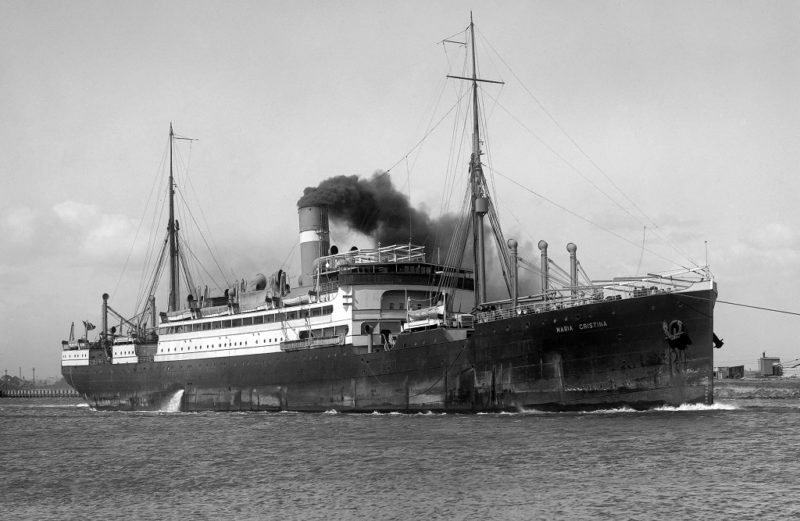
The formation of the Italian Line in January 1932 created one of the most enigmatic and beloved, if relatively short lived, shipping companies the world has seen. Nevertheless in the process it subsumed not just the ships but also the identities of a disparate and proud assortment of independent Italian shipping lines, amongst the most prominent of which was Lloyd Sabaudo.
Lloyd Sabaudo’s origins can be formally traced to an agreement signed in Turin on 21st June 1906 between a pair of prominent Genoese businessmen, Alessandro Cerruti and Eduardo Canali. The new company, officially known as Lloyd Sabaudo Società Anonima di Navigazione, largely came about as a result of the Mediterranean Conference that year, in the wake of which Prince Line, a British operator for whom Cerruti acted as agent, pulled out of the Genoa to New York trade. Capitalised by Ligurian and Piedmontese shipping and financial interests Lloyd Sabaudo had two main areas of operation, shipping under the directorship of Cerutti and insurance, managed by Canali. Although it was registered in Turin (where the insurance services were based), Cerruti’s shipping offices were located in Genoa, which also served as the port of registration for the company’s vessels. For its first vessels Cerruti negotiated to take on the contracts for two transatlantic steamships which Prince Line held with the Sir James Lang and Sons shipyard on Wearside, whilst adding a third vessel to the order. Amongst the notable investors were members of the Italian monarchy, specifically Prince Tomaso of Savoy, Duke of Genoa and nephew of the King. The royal backing not only provided the company with significant financial and political clout but kept competitors, especially their most prominent competitor Navigazione Generale Italiana (N.G.I.), at arms length.
There could be little ambiguity regarding Lloyd Sabaudo’s most illustrious sponsors when the company’s first three liners entered service on the Genoa to New York run, between April and June 1907. Re d’Italia, Regina d’Italia and Principe di Piemonte were all 6,560 grt, twin screw emigrant carriers, offering rudimentary accommodation for 1,900 in steerage and more sophistication for the 63 in first and second class. The trio introduced Lloyd Sabaudo’s distinctive and cheerful early funnel livery, a yellow base with a broad white band sandwiched between two thinner green bands. Two larger (7,914 grt) and faster (17 knots) sisters were also ordered at this time for a new South America service. All five ships would be delivered by British yards, the first three, as detailed above, from Sir James Lang and Sons of Sunderland and the latter pair from Barclay Curle & Co. of Glasgow.
The first of the South America ships, Tomaso di Savoia (the intended name Duca di Genova was ‘stolen‘ by N.G.I.), entered service in November 1907, with her sister, Principe di Udine, following in March 1908. For the time they were rather distinctive looking vessels on account of their proportionally high superstructures, topped by a lofty, ‘Mississipi steamboat’ style wheelhouse. Once again emigrants formed the bulk of the passenger complement, with 1,200 lodged in third class dormitories but there was also space for 106 Second Class passengers towards the stern and 97 First Class in the central superstructure. First Class included six luxury cabins whilst facilities included a smoking room, a ladies lounge with views over the stern, a music room, winter garden and a lavish dining room. Starting a successful association several First Class public rooms were decorated by the famed Florentine fraternal designers, the Coppedè. The two ships sailed from Genoa to Buenos Aires, calling at Barcelona, Gibraltar, Rio de Janeiro and Santos.
Having invested so heavily in new tonnage and despite their illustrious benefactors the early years of operation were not easy for the fledgling company. In 1912 Lloyd Sabaudo posted a loss of over 1,000,000 lire and with its share capital tied up in mortgages for the ships there was a distinct possibility the company could fold. Competition on the Atlantic, both North and South, was fierce and the board knew it was imperative to build even larger and faster liners to maintain their market share. Indeed Lloyd Sabaudo ranked sixth and last in terms of passenger numbers amongst the Italian steamer lines operating on the service to the USA. When a further significant loss was posted the following year the entire board resigned.
A saviour arrived in the form of the Marquis Renzo Durand De La Penne, a forty year old former Lloyd Italiano Line captain who persuaded his friend, the wireless pioneer and fellow Marquis, Guglielmo Marconi, out of disgruntled exile in London and back to Italy as company Chairman. Further capital was engendered with the sale of Principe di Piemonte to the Uranium Steam Ship Navigation Co. in early 1914 (taking the name Principello) for operation by Canadian Northern Steamships Ltd. Perhaps most significantly for Lloyd Sabaudo’s immediate fortunes Marconi co-opted Sir William Beardmore, owner of the eponymous Scottish ship, train and ultimately aircraft manufacturing business, to the board of directors.
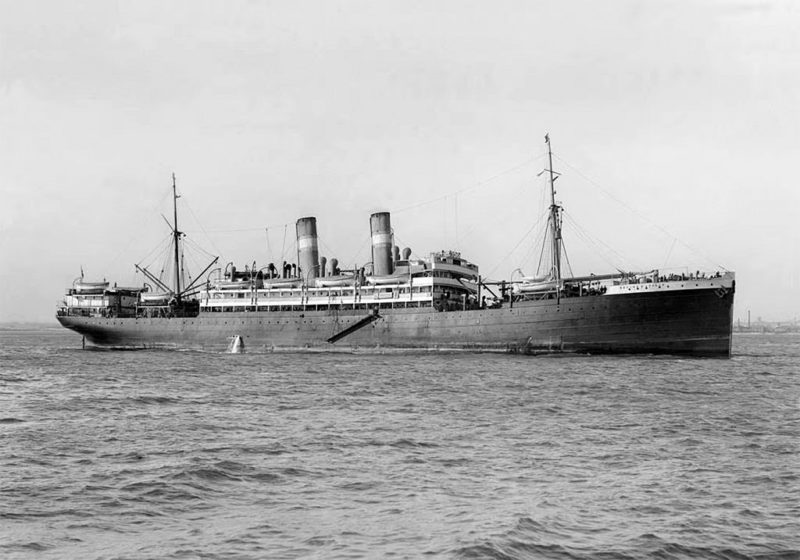
Sir William agreed to underwrite a new share issue of 3,720,000 lire allowing a contract to be signed on 26th March 1914 for his yard to start work on Lloyd Sabaudo‘s newly commissioned flagship, Conte Rosso. The main tangible alteration effected as part of the De la Penne ’takeover’ was a change of funnel colours, blue bands now replaced the earlier green.
In return for quoting a bargain price Beardmore’s Dalmuir yard was obliged to reduce costs as much as possible. The most significant measure was to utilise an earlier Beardmore design for the new ship. The template used was the Alsatian, which had been delivered in January 1914. Conte Rosso would replicate the Allan Line ship’s hull, superstructure and propulsion machinery, thereby allowing the first keel plates to be laid on the north bank of the Clyde, just three months after the contract had been signed.
This Conte Rosso never saw commercial service but became a significant and indeed pivotal ship in her own right. After two years of wartime inactivity Beardmore persuaded the British Admiralty to buy out Lloyd Sabaudo’s stake in the rusting keel for a little under £130,000 and resurrect a warship design that they had initially been proposed in 1912. The hull was launched as H.M.S. Argus on 2nd December 1917, ultimately entering service as the world’s first flush deck aircraft carrier in September 1918.
Lloyd Sabaudo invested in a range of second hand tonnage in the early war years including the 3,344 grt, twenty three year old Elio, which was pressed into service as D’Aosta in 1915 and was joined that same year by the similar sized 1899 vintage Carignano, formerly Pasquale P, and Coltano, ex-Maurizio, all purchased from local Genoese ship owners. In 1916 Lloyd Sabaudo acquired four more second hand vessels, the 4,298 grt Racconigi, the 3,026 grt Resurrezione, the 5,601 grt San Rossore and the 4,637 grt Valdieri. The latter became the company’s only war victim. She was torpedoed on 8th June 1917 by the German submarine U-39, sinking fifty miles off Cape Spartel on Morocco’s north western tip whilst inbound for Genoa, with a cargo of munitions that she had picked up in New Orleans. The same year Valdieri was sunk the company acquired its first new build since Principe di Udine, nine years before. The 5,872 grt Capodimonte had been laid down as War Tiger.
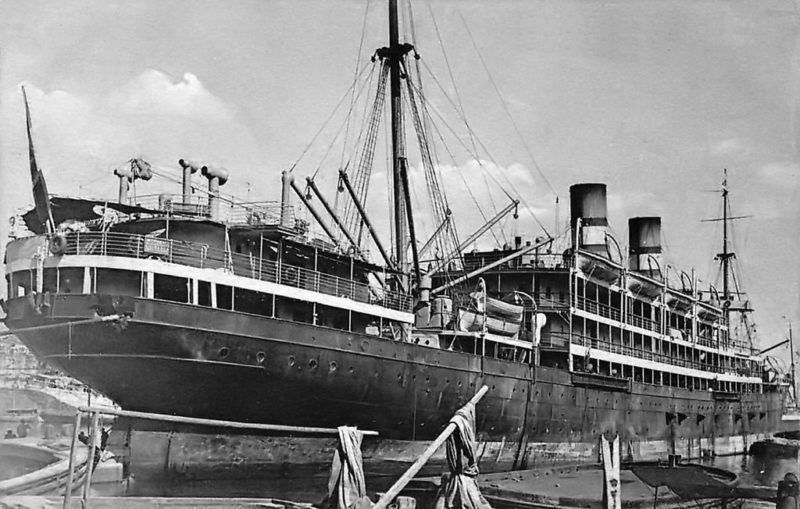
Prompted by the government, when the armistice came Lloyd Sabaudo readily shared in the spoils of war, chartering the 12,335 grt Pesaro, originally Hamburg America’s Barbarossa class combination liner Molkte and her sister Ferdinando Palaciano, formerly König Albert, for North Atlantic sailings in 1919 and 1920 respectively. Although Ferdinando Palaciano was returned to the state the following year Pesaro provided sterling service on the La Plata run until 1925. North German Lloyd’s Sigmaringen which had been commandeered by the Italian government in 1915 and renamed Arnaldo da Brescia was pressed into a new austerity emigrant service to Australia, alongside a group of nearly new freighter/transporters purchased from the Shipping Controller, London (representing the UK government). Renamed Pollenzo, Carignano, Moncalieri and Montecristo, with ‘tween deck steerage accommodation for between 150 and 280 migrants, these were a stop gap solution whilst two new, bespoke vessels were under construction for the service. Amongst them was the extraordinary 2,313 grt wooden hulled War Stikine, which the Italians renamed Scampolo.
The end of the war also brought a slow resumption of commercial shipbuilding and on 16th January 1920 the keel of a new Conte Rosso, together with a sister, Conte Verde were simultaneously laid down at Dalmuir. Just over a year later (and a fortnight after an aborted first attempt) Conte Rosso was named and launched by the wife of the Marquis Castiglioni, director general of Lloyd Sabaudo, on 10th February 1921. It was a troubled time however and work on the ships frequently ground to a halt, due to shipyard strikes and funding. It was only after government intervention and the granting of subsidies that construction resumed in earnest.
Conte Rosso was a significant vessel in many ways, her spacious interiors, renowned for their vibrant and lavish décor were once again completed under the direction of the Florentine Coppedè brothers. They were instrumental in creating the light, bright but luxurious feeling, with an (arguably exaggerated) sense of grandeur portrayed through historical references to the House of Savoy and in particular Amedeo VII (the ‘Red Count‘), depicted in large paintings and artefacts. Amongst her most noteworthy features was an ‘Al Fresco’ Summer dining area and adjacent garden lounge for First Class passengers.
Technically Conte Rosso and Conte Verde were notable as the first merchantmen to be fitted with double reduction geared turbines. The two sets consisted of high and low pressure units developing 11,000shp each, with the double reduction gearing transferring the initial 2,950rpm (high pressure) and 1,686rpm (low pressure) to a more manageable 92rpm on the shafts, rotating the twin screws to maintain their 18.5 knot service speed.
Externally Conte Rosso had a neatly balanced profile, from her sturdy, vertical bow to the classic counter stern. The pair of colourful, slender funnels with their archetypal Beardmore rims matched the gentle rake of the fore and main masts. At 17,048 grt and with a length of 180 metres (590 ft 7in) she was the largest Italian liner to date and the first new one to enter service after the First World War. Physically she was a handsome, no-nonsense Scottish built ship with a squared off, stepped superstructure forward, although the neatly rounded Second Class smoking room aft gave the stern a ‘softer’ appearance, in harmony with the clipper stern.
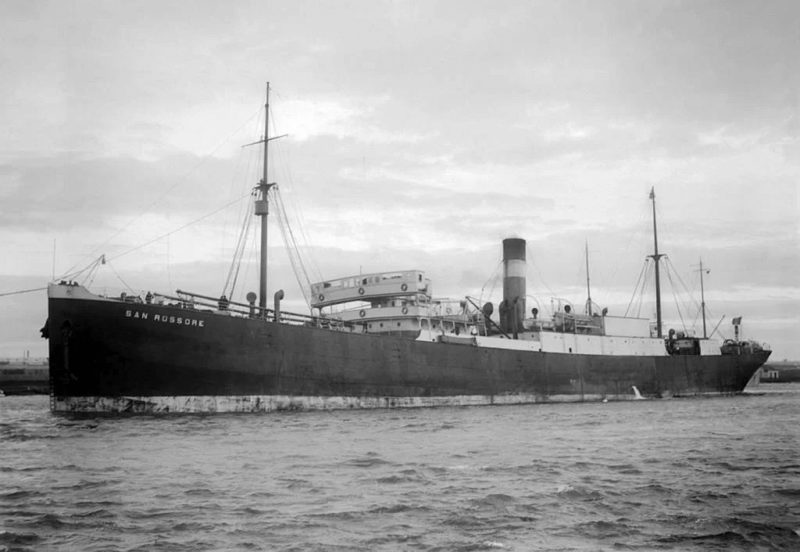
By mid-February 1922 Conte Rosso undertook builders trials in the Firth of Clyde, achieving 20.15 knots over Robert Napier’s Skelmorlie measured mile, more than 1.5 knots above the contracted service speed. After a further delay when damaged gearing teeth necessitated impromptu repairs she finally left Scotland on 17th March 1922, arriving at Genoa five days later. With a doubtlessly proud and relieved De La Penne and Beardmore among the passenger list Conte Rosso finally departed Genoa on 29th March, on her maiden voyage to Buenos Aires. On her return to Genoa Conte Rosso was switched to her originally intended route, departing for New York where she arrived on 26th May after a ten day voyage via Naples and Gibraltar. Her distinguished passenger list reputedly included a number of Counts and Countesses.
Although laid down on the same day as her sister, various complications resulted in the second Count enduring a very protracted building process. Consequently the much delayed Conte Verde (in honour of Amedeo VI, the 14th Century ‘Green Count’ and father of the ’Red Count) was ultimately launched on 21st October 1922, having been named by Maria Cristina Marconi, the radio pioneer’s second wife.
She would subsequently be godmother to his namesake ship, Lloyd Triestino’s Guglielmo Marconi, almost forty years later. Having run trials six days earlier Conte Verde steamed down the Clyde on 10th April 1923 bound for Genoa from where she sailed for the River Plate on the 21st of the month. A year after her sister, Conte Verde finally sailed for New York on 13th June 1923, under the command of Captain Amedeo Pinceti with a healthy complement of 1,233 passengers. A correspondent from The Times was swept away by the interior splendour, commenting:-
“The wall of the main staircase bears a huge painting by Cavalieri, the library is in the Tuscan renaissance style, with stained-glass windows and ceiling paintings, and the other public rooms are equally ornate. The wealth of artistic detail everywhere recalls the old-time splendour of an Italian palace.”
On schedule she arrived in the ‘Big Apple’ eleven days later, having cut a full four days off the crossing time of the previous incumbents Re d’Italia and Regina d’Italia’s.
As previously alluded to Lloyd Sabaudo’s immediate post-war expansion was not limited to the Atlantic. Nor was it limited to ships. They invested in a series of joint ventures with Franco Tosi S.p.a., a large steam and diesel engine and mechanical engineering firm based at Legnano, north of Milan, which included industrial looms and perhaps more relevantly the Cantieri Navale Franco Tosi, at Taranto on Italy’s heel. Although primarily involved in the construction of submarines and warships Lloyd Sabaudo commissioned the yard to build two new vessels which would initially augment the Australia service.
With their lofty black hulls and low, two storey central superstructure, capped by a single, straight and tall funnel, the Principessa Giovanna and Principessa Maria were primarily conceived as freighters, with a cargo capacity in excess of 5,000 tons in five holds. Nevertheless such was the demand for emigrant berths that they squeezed up to 400 in rudimentary ‘tween deck accommodation, which then reverted to cargo space for the north bound return to Italy.
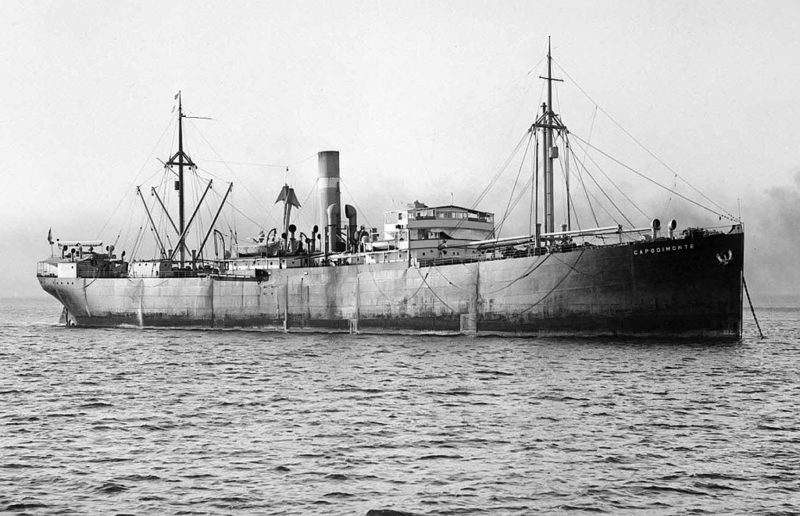
When Principessa Giovanna departed Genoa on 4th September 1923 her most notable features were hidden from sight. Not only was she powered by state of the art double reduction geared turbines but at 2,303 tons her bunkers were sufficient to permit an entire voyage with only one bunkering stop, at Aden. Just over three months later Principessa Maria undertook her own maiden voyage to Australia, which would also prove to be her last.
As part of a reshuffle to accommodate the new Conte Rosso and Conte Verde the line’s original North Atlantic fleet was ultimately dispersed, with Re d’Italia and Regina d’Italia shifting to the Genoa-Sydney service and the two Principesse temporarily filling in as freighters on the New York run.
Simultaneously and despite the funding problems and labour issues that had marred Conte Verde’s construction, Beardmore’s personal influence and a highly favourable price due to British government subsidies ensured that the order for the next order went once more to his Dalmuir yard.
In May 1924 the contract was signed (with an option for a sister) for an even larger near sister to the earlier Conti, whose keel was laid the following month. In addition to the subsidies and loans, funding for the project also came from selling the company’s stake in Marittima Italiana (a business whose sturdy little SS Genova operated to India) to Lloyd Triestino.
A full history of this new Conte is provided elsewhere but she was noteworthy for multiple reasons. At 24,416 grt with a length of 652.6ft, she once again incorporated double reduction geared turbines with a similar service speed. The speed of construction and completion was unprecedented, almost as if Beardmore’s were determined to make up for the tarrying that plagued her predecessors. Launched as Conte Biancamano, on 23rd April 1925 (in honour of Umberto I, the first Prince of Savoia whose pale hands spawned the nickname), she undertook trials in early November and had completed her maiden voyage to New York by the end of that month. Conte Biancamano would be the last Italian liner built in a foreign yard.
By the time Conte Biancamano entered service the Immigration Act of 1924 was already restricting numbers travelling from Europe to the USA. In contrast there was a surge in traffic to South America. With the new Count’s arrival Conte Verde had already been earmarked to make a switch to the La Plata service but in addition the company decided to transfer the Princesses, once again adapted for ‘tween decks emigrants in January and March 1925. As bookings continued to grow Lloyd Sabaudo decided the quickest and presumably cheapest way to meet demand was to convert the two freighters into bona fide passenger ships. The task was awarded to the Bacini & Scali Napoletani at Baia on the Western edge of the Gulf of Naples, with Principessa Maria entering the yard in March 1926 and the Giovanna five months later. Italian yards would develop a fine reputation for their conversion work over subsequent decades but this was one of the first.
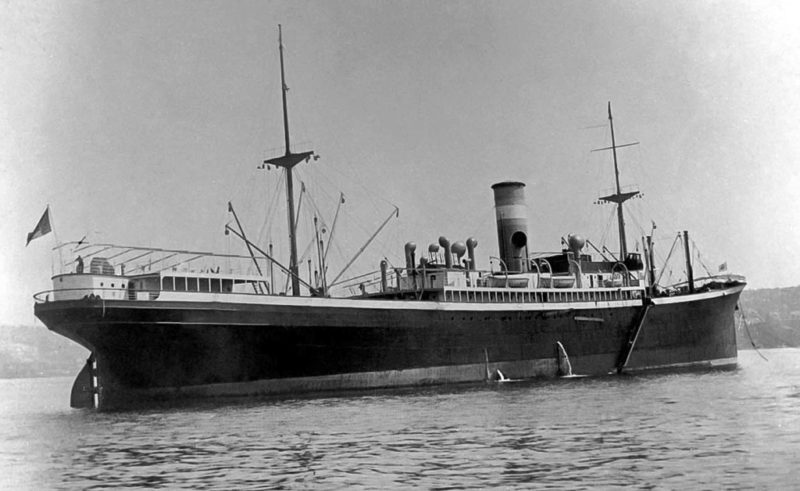
When the ships emerged after four months of intensive cosmetic surgery they looked completely unrecognisable. The most obvious appendage was a second ’dummy’ funnel, aft of the original and installed to provide a visual balance and doubtless appeal to prospective passengers (even at this stage emigrants equated the number of funnels to the size and status of a vessel). The funnels also sported the company’s yellow with white and blue bands livery, having previously been predominantly black. Meanwhile the extension of the superstructure, both fore and aft, provided greatly improved accommodation and public rooms for 700 Third Class passengers, whilst the original masts and booms etc were retained to service substantial general and refrigerated cargo capacity (the latter primarily geared up for beef exports from Argentina). Perhaps the most significant of all the changes however was the colour of the hull. Changing it from black to white was a clear statement that the twins had changed role.

The option for Conte Biancamano’s sister was never exercised. Indeed none of the multi-faceted aspects of the once great William Beardmore and Company Ltd. ever fully recovered from the post-Great War slump.
In 1930 the shipbuilding arm was acquired by National Shipbuilders Securities Ltd. with the express intention of dismantling and selling all the machinery and infrastructure. By then Sir William (also known as Lord Invernairn after receiving a Baronetcy in 1921) had been removed from his own company board on the instruction of the Bank of England.
The fate of Beardmore and indeed the whole British shipbuilding industry was in stark contrast to its Italian counterpart, which was clearly on the rise. Under pressure from the Italian government Lloyd Sabuado felt compelled to utilise a home grown yard to construct a running mate for the ‘White Count‘.
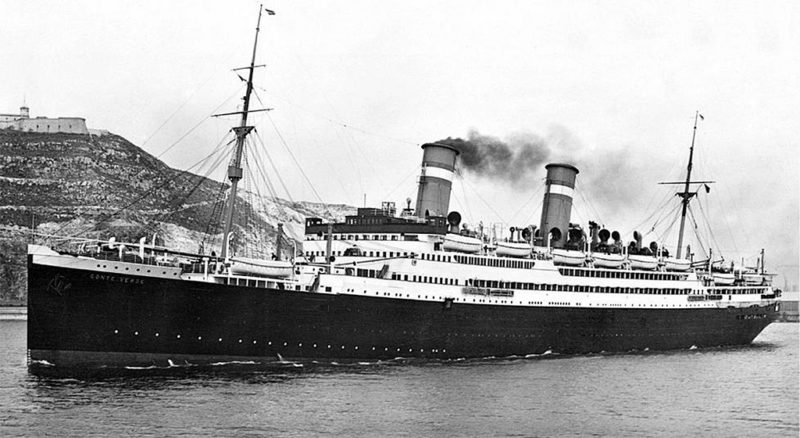
At the time only two domestic shipyards had the requisite knowledge and facilities for the job and with Ansaldo, near Genoa, already committed to building N.G.I’s new flagships the task fell instead to Stabilmento Tecnico at Trieste.
It was a massive undertaking for the Adriatic shipyard which had never built a merchant ship to compare with Lloyd Sabuado’s requirements. Accordingly to simplify the process and ensure homogeneity with her sister they utilised Conte Biancamano’s blueprints, even if it must have riled the Scottish workforce to see Italian counterparts build ’their’ ship. Conte Grande was nearly identical to her older sister, the most significant visual difference being an extension that jutted out in front of the forward superstructure, containing the writing room and a small shop. The Trieste built ship was called Conte Grande whose long and eventful career is covered in a separate article. Suffice to say when she entered service on the Atlantic in April 1928 she caused a sensation, if anything she was even more opulent than Conte Biancamano. Lloyd Sabaudo now provided a third of all Italian registered passenger traffic, the company’s growing confidence manifested in the beautifully elaborate publicity material commissioned to advertise their vessels.
The introduction of Conte Grande released Conte Rosso to join her sister on the La Plata service. The remaining two ships of the company’s original fleet, Regina d’Italia and Re d’Italia, were now laid up and ultimately scrapped in 1928 and 1929 respectively. With a number of other utility vessels disposed of in this period, it left just the four Counts, the two Princesses and a handful of freighters in the fleet. However Lloyd Sabaudo’s expansion was about to take on a new direction, with the acquisition of a key rival.
Reeling from a reduction in demand for emigrant berths, expenditure on their two new motor ships and the general economic slowdown, the famous family run Cosulich shipping group had reported a considerable loss in 1928 and witnessed a tumbling share price. Seeing an opportunity and buoyed by the backing of the Banca Commerciale Italiana Lloyd Sabaudo acquired a third of Cosulich’s share capital, providing Cerruti and De La Penne with a place on the Cosulich board and considerable influence over its operations which included Cosulich Line, Lloyd Triestino, Marittima Italiana (which it had previously disposed of) and Adria Lines. Cosulich also owned a shipbuilding facility at Monfalcone, north of Trieste.
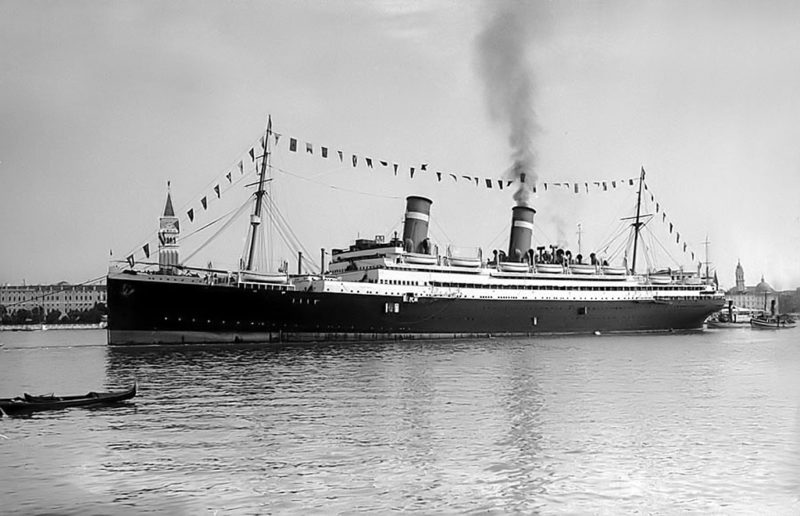
Part of De La Penne’s reasoning in investing in Cosulich was to safeguard Lloyd Sabaudo’s interests in the face of growing political interference from Rome. In collaboration with Antonio Cosulich he was able to revive the Trieste company’s fortunes and thereby, briefly, retain their autonomy. Nevertheless, after a tough round of negotiations Lloyd Sabaudo had already been forced into an Atlantic pooling arrangement with NGI from July 1928. Co-ordinating the timetables of the various liners made sound economic sense, however the corporate cultures of the companies were so diverse that the only real common ground they shared was mutual mistrust. Despite the arrangement Lloyd Sabaudo continued to show an independent and innovative streak when introducing a new air/sea mail service between Genoa and Gibraltar from September 1928. Utilising seaplanes operated by an associated company (Società di Navigazione Aerea) they later offered VIP passengers the same link to and from Conte Grande and Conte Biancamano, saving precious time for those with the means.
Lloyd Sabaudo had a further reason to submit to the fascist government’s co-ordination plan. Along with N.G.I. they were seeking loans towards construction of the company’s first superliner, a vessel capable of competing with the new German Schnelldampfers Bremen and Europa and even larger projects then developing in Britain and France. As a man with an eye for grandiose industrial and infrastructure projects, especially those that carried reflected glory for Italy and his own ego, Mussolini took a very active interest in the proposals.
The government formed L’Istituto di Credito Navale Maritime (the Maritime Lending Institution) which facilitated a 150 million lira loan repayable over fifteen years, enabling both companies to seek tenders for their intended flagships. In return the companies mortgaged their most recent acquisitions, in Lloyd Sabaudo’s case Conte Biancamano and Conte Grande.
In view of both the capital expenditure required and exorbitant running costs it was essential that Lloyd Sabaudo and N.G.I.’s new vessels were compatible, so that they could offer a balanced service. To this end both companies issued the same specifications to interested shipyards: 45,000 grt, a 25 knot service speed and a passenger complement of approximately 2,200. In return for agreeing the co-ordinated schedules N.G.I. and Lloyd Sabuado also secured a 50 million lira grant and a significant increase in the annual mail subsidy, officially reflecting the new ships’ increased service speed but more realistically to help absorb the additional operating costs. As the maritime historian Peter C. Kohler explains in his exceptional book ‘The Lido Fleet‘, the transatlantic service was already overtonnaged even before the advent of the super liners and the economic downturn. The six existing vessels on the North Atlantic service provided in excess of 206,000 available berths in 1929 but only carried 135,212 passengers, a load factor of just 65%. In this context there was no commercial justification for ordering the new ships, especially when American tourist numbers were plummeting and emigration to the USA was drying up.
The one other perhaps inevitable condition imposed by the government was that the ships must be built in Italian yards. Of course Lloyd Sabaudo had already bowed to pressure on that front with the Conte Grande but nevertheless there was some resentment at being restricted from securing a better price from Beardmore’s or another foreign yard. Interest in the new ship was considerable. It was initially referred to as the Quinto Conte (Fifth Count) but the press also nicknamed her Conte Azzurro (Blue Count) because of the general perception that she would take (or at least vie for) the Blue Riband for the fastest Atlantic crossing, then still held by the veteran Mauretania.
On 28th December 1929, twenty six days after N.G.I. signed a contract with Ansaldo for their new flagship, Lloyd Sabaudo reached an agreement with Cantieri Riunite dell’Adriatico for construction of yard number 783. As well as the San Marco (Trieste) yard the company had also held negotiations with the Muggiano, Odero-Terni shipyard (La Spezia).
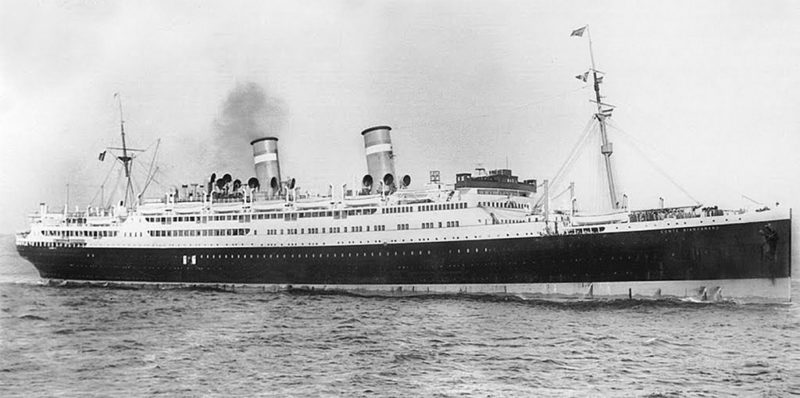
Unlike the conservative approach taken by their rivals Lloyd Sabaudo jettisoned initial plans for what amounted to a larger, faster, three funnelled version of the Conte Grande. Instead and with one eye on North German Lloyd’s innovative new flagships, they developed plans for what many consider to be the finest ocean liner of the 1930s. The company’s chief naval architect Michele Russo and his subordinates, working in tandem with CRDA’s exceptional design team (including a rising star called Nicolò Costanzi) under the guidance of Cesare Sacerdoti created a ship of startling efficiency and beauty. The modern, streamlined lines for which the new ship would be famed were replicated internally by the appointment of Gustavo Pulitzer Finali as co-ordinating architect. In contrast to the previous Conti and with the exception of the grandiose Colonna Hall, Pulitzer’s modern interiors showed best ontemporary Italian design.
However all this was still in the future as the new decade approached. No one except perhaps Il Duce himself would have predicted that the new Conte would enter service for an entirely new shipping line and that Lloyd Sabaudo would effectively cease to exist within two years. Nevertheless the fallout from the Wall Street crash of September to October 1929 was already starting to have repercussions.
Of course as the new ship started to emerge on that San Marco slipway her erstwhile fleet mates were still plying the oceans. Despite the board’s concerns the pooling arrangement from July 1928 worked remarkably smoothly. Conte Biancamano and Conte Grande operated in tandem with N.G.I.’s new Roma and Augustus on the Genoa to New York service with Cosulich’s Vulcania and Saturnia offering co-ordinated sailings from Trieste.
Meanwhile on the South America run Conte Verde was cementing a place in history for her contribution towards sporting immortality. On 21st June 1930 she cast off from Genoa with the Romanian team. At Villefranche-sur-Mer she picked up the French squad, as well as a large group of officials including one Jules Rimet carrying a gold trophy in his luggage.
In Barcelona they were joined by the Belgians, before traversing the Atlantic to Rio do Janeiro where the Brazilians boarded. Just over a fortnight after leaving Italy Conte Verde steamed into Montevideo and discharged her cosmopolitan complement of passengers. She was indeed the ’unofficial’ travel partner to the inaugural football World Cup in Uruguay (won by the home team and allegedly not just because eleven of the fifteen referees came from that country). Of the participating teams only Yugoslavia travelled by another means and that was only because the ship was fully booked when they enquired.
Such stories were a rare ray of sunshine in an otherwise demoralising first year of the new decade. Like other lines Lloyd Sabaudo decided to divert Conte Grande to operate ’low season’ cruises to the Caribbean over the winter from 1930 as the Great Depression swept through the USA with reverberations across the rest of the world. As a prelude to subsequent events the N.G.I. and Lloyd Sabaudo services to Australia were merged under a directive from the Italian Government. In return the state provided a significant increase in voyage subsidies and facilitated the charter of larger and faster Lloyd Triestino tonnage. Lloyd Sabaudo’s yellow, white and blue livery now adorned the short, square, motor ship stacks of the 9,870 grt Remo and the even shorter ‘exhaust pipe’ arrangement on the boxy 8,657 grt Esquilino.

The precarious state of the Italian shipping line’s finances was being replicated across Europe. In Britain both Cunard and White Star had commissioned ships of over 1,000 feet in length but work on the former was halted in December 1931 and the latter never got beyond the keel stage. Cunard ultimately went cap-in-hand to the Government which granted loans to facilitate completion of Queen Mary and a similar running mate but on condition that Cunard and White Star merged. Meanwhile in Paris, Premier Laval’s government came under intense pressure to bail out the nearly bankrupt French Line, if only to reinvigorate work on their own Blue Riband challenger, Normandie, and thereby save the St. Nazaire shipbuilder from going under.
In contrast to the hand wringing of the democracies Italy’s authoritarian regime took immediate and decisive action. For Mussolini the economic threat to the banks and shipping companies was regarded as a personal challenge that he intended to meet head on. Of course it also neatly fitted in with the core Fascist ideology of state control. In October 1931 the Marchese Renzo Durand de la Penne was summoned to a meeting, hosted by Count Costanzo Ciano, Minister of Communications (and Il Duce’s son-in-law) and General Ingiana, Director Generale of the Merchant Marine. Also attending were representatives of N.G.I., Cosulich, Lloyd Triestino and Banca Commerciale Italiana (B.C.I.).
Despite personal reservations it was clear to Lloyd Sabaudo’s representative and pre-war saviour that direct state intervention was now inevitable. Nevertheless the company President was able to bask in a final moment of glory on the 28th of the same month when amidst predictable royal and fascist pageantry (the launch was timed to coincide with the Ninth anniversary of The March on Rome) and before a crowd of about 80,000 Maria José, Princess of Piedmont, smashed a bottle of Spumante against the 18,370 ton hull and named the new ship Conte di Savoia. Sparks and fires erupted along the slipway as she slid down into the Adriatic.
It was rumoured that Lloyd Sabaudo considered calling their new flagship Dux, in honour of Mussolini. This would have neatly fitted in with N.G.I.’s selection of Rex for their equivalent vessel but supposedly Il Duce declined the honour.
Conte di Savoia would not of course enter service bearing the famous yellow, white and blue funnel livery. Negotiations were already advanced towards the formation of two state run holding companies, one to assume the frozen assets of the B.C.I., the other to own and operate the combined and merged fleet; Italia Flotte Riunite N.G.I.-Lloyd Sabaudo-Cosulich. On 11th November 1931 the three original company Presidents, the director of BCI and Count Ciano signed the ‘document of co-ordination’ in the presence of Mussolini.
Although theoretically N.G.I. and Lloyd Sabaudo held an identical stake in the new venture (640,000 shares providing 320 million lira capital) it was, like the Cunard/White Star merger, regarded more as a takeover than a coming together of equals. With the exception of Marchese Renzo Durand de la Penne (Administrator) and Dr. Alessandro Cerruti (Director) there were no senior positions for Lloyd Sabaudo executives on the new board which was dominated by N.G.I. Perhaps as a consequence Rex always held the limelight over Conte di Savoia. Nevertheless Lloyd Sabaudo’s proud tradition was at least partially maintained with the new flagship’s crew, only their former officers served onboard what former N.G.I. staff caustically referred to as ’the Austro-Hungarian fortress’.
On 2nd January 1932 the Italian Line came into being and just six days later Conte Biancamano became the first ship sporting the white, red and green stack livery to cross to New York.
She would cement her legendary reputation during a twenty two year career with Italia, sandwiching six wartime years under the ‘stars and stripes‘. Her near sister Conte Grande provided even longer service, lasting until 1961 and in her post war guise regarded as among the beautiful passenger ships of the post-war era. Of the other former Lloyd Sabaudo vessels (all of which outlasted the company, which was liquidated in 1936) Conte Rosso, Carignano and Moncalieri were chartered to Lloyd Triestino without sailing for the Italian Line. Conte Verde joined them after just four return trips to South America. The Trieste based company ultimately bought the Conti in 1933 and the two smaller ships in 1937.
Principessa Giovanna operated for Italia until 1953, she was renamed San Giorgio after serving as a British managed hospital ship during the war years. Her sister was however less fortunate, succumbing to fire and sinking in August 1944, three years after being acquired by the Argentine government and renamed Rio de la Plata.
Perhaps the saddest fate of any Italian liner was that of Conte di Savoia. After a dramatic maiden voyage in which she almost sank following the rupture of a seawater inlet valve, she became one of the most glamorous and favoured ways to cross the Atlantic until Italy’s ill-judged involvement in the Second World War on the Axis side. She narrowly missed out on capturing the Blue Riband from NDL’s Europa in May 1933 (by .28 of a knot!) and never offered a significant challenge once her running mate Rex had secured the title three months later.
Nevertheless she was noted as the first stabilised Atlantic liner, with three huge Sperry Gyroscopes housed forward of the engine compartment. Having been laid up at Malamocco, Venice in June 1940 for safe keeping she was attacked by German bombers on 11th September 1943, set ablaze and sank in the shallow waters of the lagoon. The partially scrapped hulk was raised after the war and taken to Monfalcone for possible rebuilding as an austerity emigrant carrier. Ultimately she was only good for scrap.

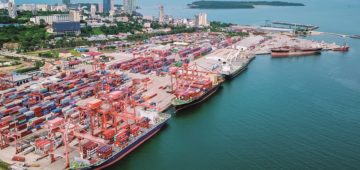



Comments
Sorry, comments are closed for this item